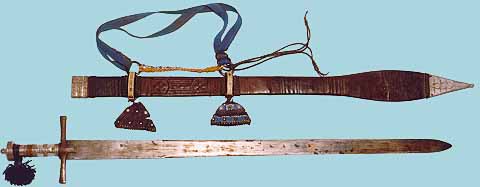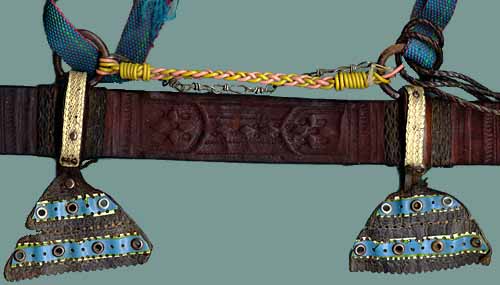 |
 |
|
|
 |
 |
|
|
This sword, likely worn well into the second half of the 20th Century, presents us with an intriguing mixture of traditional forms and modern materials. The profile of the blade is entirely traditional: a double-edged broad blade with nearly parallel edges and a spatulate tip. However, rather than being forged, the blade is composed of reasonably thin modern sheet steel of uniform thickness which provides a blade of moderate, though likely effective, weight and flexibility. So, while the traditional profile remains, in terms of manufacture, this blade is quite modern and has much more in common with a modern industrially-produced agricultural machete than with traditional forged blades. The leather scabbard is also of traditional form; the chape (tip end) is engraved with traditional designs, but is made of a relatively modern material, sheet aluminum. The shoulder strap, the cream colored plastic over the ring supports on the scabbard, the insulated wire between the rings and the overlaid plastic strips on the triangular leather decorations all appear to be recycled "found" materials of modern industrial manufacture.
An Editorial Digression: No doubt, from the perspective of the last man to seriously wear this sword, these trim items were desirable and colorful additions to a prized weapon. The likely perspective of those who view this page, who have had extensive exposure to modern plastics in cheap and nasty applications, will be to regard these trim items as indignifying fugitives from a municipal incinerator or landfill. Yet, if you will put yourself in the mindset of the postapocalyptic movie genre, which would be about the only environment where the sword will have any practical future, such colorful recycled synthetic trim could well be all the fashion for swords to come.